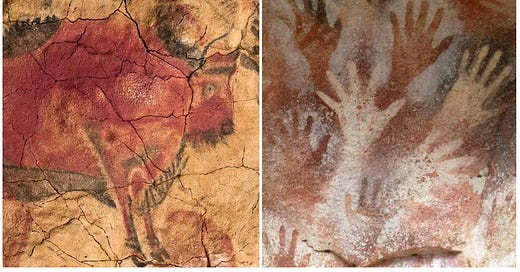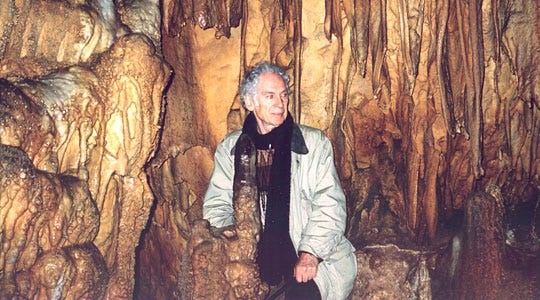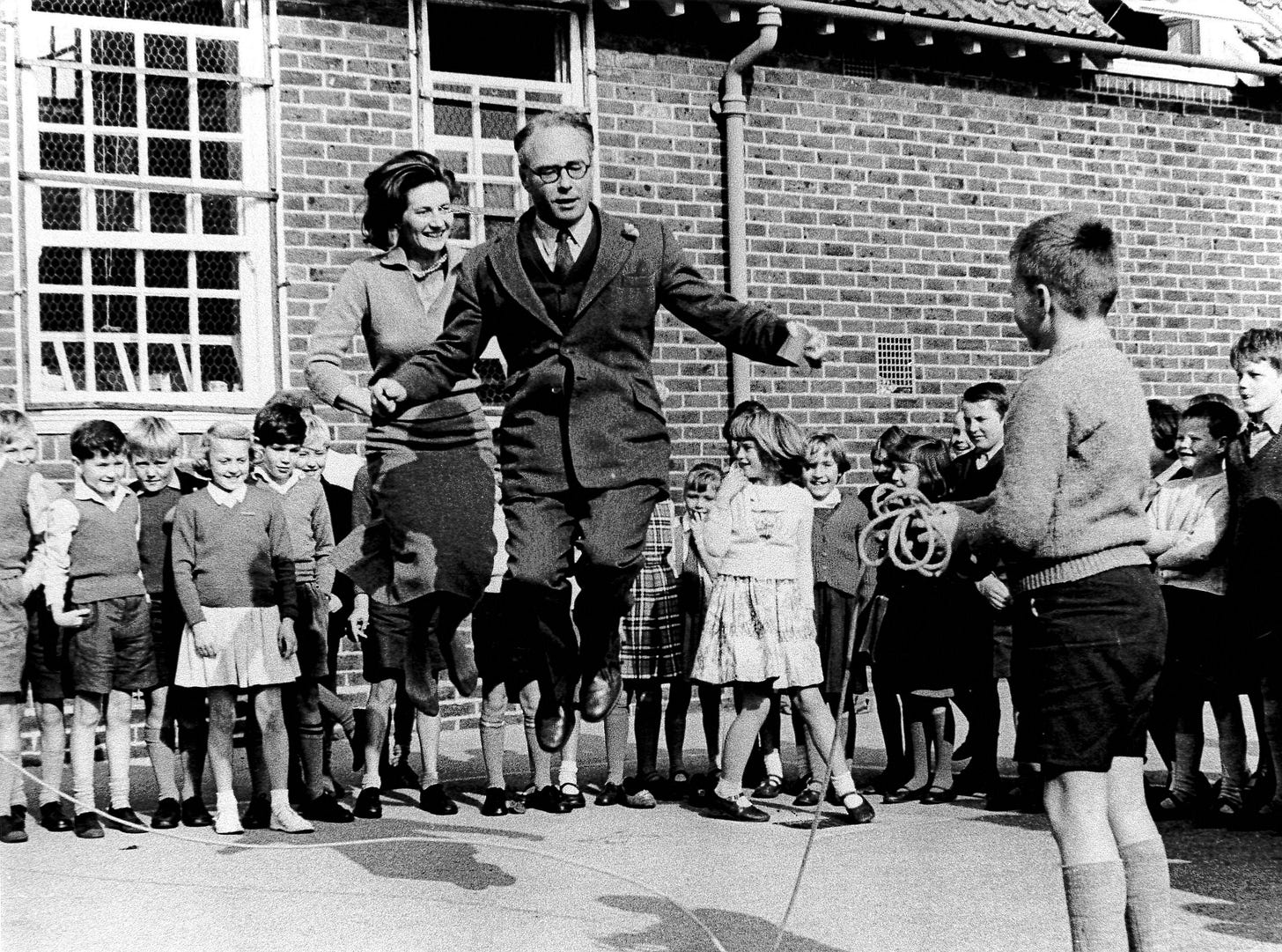What Can We Know About Ancient Music?
Were They High? Do Children Have Secret Knowledge? And WTF is Archaeoacoustics?
OK, this is for everyone who likes CLASSIC ROCK!
We are taking it all the way to the Stone Age today in THE BEE with a research essay on the new science of Acoustic Archeology in prehistoric cave sites.
Traditional children's songs often reflect themes of animals, nature, hunting, and the supernatural—just like early cave paintings might have inspired.
Are they also hiding ancient secrets?
The developing field of archaeoacoustics or archaeology of sound has revisited ancient spaces with new attention to the acoustics and resonant properties of these spaces.
Previously ancient sites were primarily "looked" at for their visual and architectural characteristics, archaeological sites such as Stonehenge in Avesbury, UK, Malta's Hal-Salfieni Hypogeum, Mexico's Chichen Itza pyramids and Paleolithic rock-art in France and Spain have recently been 'listened' to with musical ears.
Media reports are sharing that new research is beginning to provide testable scientific evidence indicating the undeniable significance of sound in some pre-historic cultures. Although our modern ears might struggle to understand how, exactly, sound was used and perceived in these ancient cultures, various approaches to do so range from experiential research using voice and listening for resonances to the use of technical-acoustic methods of sine-wave sweeps.
The Most Famous Prehistoric Cave Painting Sites
Prehistoric cave paintings are vivid and mysterious survivors from some of humanity’s oldest art. They are found in limestone caves in southwestern France and northern Spain. The art is associated with the Paleolithic period.
Chauvet Cave, France
Discovered in 1994, this cave contains stone engravings and paintings of animals, some of which are 35,000 years old. It has never been open to the public.
This cave complex in southwestern France contains over 600 wall paintings. It became a popular tourist site after World War II, but was sealed off in 1963 to protect the paintings from damage.
El Castillo Cave, Spain
This cave contains some of the oldest cave art in Europe, including red handprints, dots, and disks that are more than 40,000 years old. Some scientists believe the paintings were made by Neanderthals.
Reznikoff’s Work on Cave Acoustics
Iégor Reznikoff is a French researcher known for his work in archaeoacoustics—the study of sound in ancient spaces. His research explores how prehistoric humans might have used caves, not just as shelters, but as resonant spaces for rituals, chanting, and early forms of music.
One of his most influential studies involved mapping the sound properties of decorated caves, particularly in France and Spain.
He and his team would hum, clap, or use simple percussive sounds while moving through caves like Lascaux and Chauvet.
Here’s the cool part! They found that many of the most prominent cave paintings were placed in locations with exceptional reverberation or echoes. This suggests that early humans may have chosen these spots deliberately for singing or chanting, possibly as part of ritualistic or shamanistic practices.
Reznikoff noted that:
Red dots and symbols (often found in caves) were placed in spots where sound REVERBERATES particularly well. Reverb, the collection of sound waves bouncing off hard surfaces has always been central to music and song.
Some chambers acted as natural amplifiers, possibly serving as proto-concert halls or sacred spaces.
The acoustics could have enhanced trance-like experiences, making the caves feel "alive" with sound.
What is Reverb?
I spent hours searching YouTube for the best history and explanation of reverb to link here so you don’t have to look it up. But if you find a better one than this - because YouTube is now a near infinite body of esoteric knowledge - please share.
Instruments, from the most ancient known to the classic music halls and recording studios, and the very latest computer digital music workstations are often judged by their emulation, quality, and control of reverb. It’s a sound quality inextricably intertwined with human experience and our understanding of pleasing and musical sounds.
Ancient Music and Singing: What Can Be Known?
While we lack direct recordings until very recently, several clues help reconstruct early human musical practices:
Vocal Traditions & Chants
Early humans likely used chanting, humming, and overtone singing (like in modern Tuvan throat singing).
Some researchers think that early singing resembled birdsong or animal mimicry, potentially for communication, hunting, or rituals.
The acoustics of caves may have encouraged polyphonic singing (multiple overlapping voices), similar to traditional African or Mongolian throat singing.
Flutes & Instruments
The oldest known musical instruments are flutes made from bird bones and mammoth ivory, found in Germany (around 40,000 years old).
These flutes produce pentatonic scales, similar to modern folk music traditions.
Percussion instruments, such as stones and bones struck together, were likely used before melodic instruments.
Rhythmic Patterns & Dance
Foot stomping, hand clapping, and drumming on hollow surfaces might have created early rhythmic patterns. We Will Rock You is a special song for a reason in large gatherings of people.
Dance and music were likely connected in storytelling and group rituals.
Why Is The Sound of Ancient Caves Important?
Reznikoff’s work suggests that music, sound, and space were deeply intertwined in early human cultures. Rather than seeing cave art as purely visual, it might have been part of a multi-sensory experience involving chanting, music, and echoing soundscapes. This strengthens the idea that early humans were not just artists but also musicians and ritualists, using sound to shape their experiences of the world.
Listen to it all come together in this ancient church!
What Were They Singing About in those reverberating spots in the cave?
I’d like to make an assumption. If early humans were singing in the cave where they were painting, they were probably singing about the same things they were painting - their songs were likely about hunting, animals, spirits, and the forces of nature—subjects that dominated their visual art. These songs may have been functional (used in rituals or training) or expressive (telling myths and reinforcing community bonds).
Possible Themes of Ancient Songs
The Hunt & Animal Worship
Many cave paintings depict bison, deer, horses, and mammoths—animals central to survival. Songs may have imitated animal sounds or described the movements, strengths, and spirits of these creatures. Chanting could have been a pre-hunt ritual, calling for success or thanking the animal’s spirit. Some caves suggest shamanic figures wearing animal disguises, hinting at songs tied to transformation or invoking animal power.
Spiritual & Shamanic Journeys
Many painted caves are deep, and difficult to access—suggesting they were ritual spaces, not dwellings. The echoes in these spaces might have been the reason they were chosen - used to enhance trance-like states in ceremonies. Songs might have told of spirit guides, journeys into the underworld, or the wisdom of ancestors. Repetitive drumming and chanting may have been used for shamanic vision quests.
Natural Forces & Cosmic Events
Some cave art aligns with seasonal changes, star patterns, or solar cycles—suggesting songs about the sun, moon, and storms. Early songs might have been prayers for rain, fertility, or protection from natural disasters. The booming echoes of caves may have reinforced a belief that they were connected to the voices of gods or spirits.
Community & Origin Stories
Songs may have told the story of how the world was created, how humans first learned to hunt, or how fire was discovered. Repeating rhythmic chants could have passed down knowledge across generations. Some ancient peoples may have sung in call-and-response, reinforcing social bonds and traditions.
How Might These Songs Have Sounded?
Deep, resonant chanting (taking advantage of cave acoustics).
Polyphonic singing (multiple voices blending, like modern throat singing).
Percussion-based rhythms (clapping, drumming on rock surfaces, using bones or wood).
Animal mimicry (calls of bison, howls of wolves, bird songs).
If we assume their songs were tied to their paintings, they weren’t just entertainment—they were ritual tools, tied to survival, identity, and belief.
SIDEBAR: Here’s something weird: A song and video to accompany this post about cave painting and cave music.
I have a deep interest in psychotropic drugs. Like many, I think they were wrongly used, wrongly lumped in with other addictive drugs, and wrongly put aside in the drug culture era. One unusual drug that was not banned in Canada until recent years is Salvia.
Here’s a link to the government of Canada's information and position on Salvia.
Salvia disrupts consciousness more than LSD.
Its effects are unique among hallucinogens.
It is an ancient drug.
It’s dramatic in that one puff, smoked, is a complete dose, and its effect lasts only about five minutes. But it is an infinitely long and life-changing five minutes. I would also describe it as anti-addictive for any reasonable person.
Long before I learned about archaeoacoustics or even cave paintings, I wrote and recorded a silly two-minute song and video based on a salvia experience. Trying to capture and express psychotropic experiences is kind of a mug’s game, but it’s often one of those things you feel compelled to try.
I share it here only to work on the challenge to get close to the real feelings of those ancient people in their psychedelic states. I’m not advocating for it.
Echoes of the most Ancient History of Song
It occurs to me that the nearest thing to the themes and sounds being revealed by archaeoacoustics today is hidden in plain sight. Not in Rave, EDM, or Dance music, but in children's songs and music.
Children’s songs and games seem exempt from the adult world and the modern business of music and even outside school and the internet. Rather than the hit parade, they are passed on by a kind of secret society of children, informing each other, repeating quickly through fast-changing generations of children in playgrounds and private groups hidden in plain sight from the adult world.
The phenomenon of children's songs, games, and folklore being passed down through an informal, child-governed oral tradition—largely independent of adults—is a well-documented area of folklore studies, anthropology, and sociology.
From The Innermost Cave
In the "Hero's Journey" narrative structure, the "innermost cave" represents the pivotal point in a hero's story where they must confront their greatest challenge or enemy, often symbolizing a deep inner conflict or a literal location that holds significant danger, signifying a moment where they must face their deepest fears and undergo a crucial test to achieve their goal; it's considered the most critical part of their journey where they will either overcome or be defeated.
It’s an ancient narrative structure that still comes preinstalled in human brains today. This is a place Children spend a lot of time and know very well.
This is also the plot structure of almost every Hollywood movie you’ve ever seen. From the ancient cave, to Star Wars and the Marvel Universe, to the schoolyard. This is the thing we make art, sing, talk, and make stories about. Nowhere is this more true than in the everyday drama of the schoolyard.
If you have children in the 6-12 range who talk to you about their lives with the other children away from you, listen for these songs of songs. It’s so interesting.
Ancient Themes Hidden in Plain Sight
Traditional children's songs often reflect themes of animals, nature, hunting, and the supernatural—just like early cave paintings might have inspired. Here are some well-known examples that align with those ancient themes:
The Hunt & Animal Worship
These songs reflect an ancient connection to animals, mimicking their sounds or describing their behaviors.
"Old MacDonald Had a Farm" – Mimics animal sounds, much like early humans imitating animals in song.
"The Farmer in the Dell" – A simple song reinforcing the role of animals and humans in a survival-based community.
"Who’s Afraid of the Big Bad Wolf?" – Captures the fear and reverence for powerful predators, much like early cave art of lions and wolves.
Spiritual & Shamanic Journeys
These songs reflect mystery, transformation, and supernatural themes.
"Rock-a-bye Baby" – Has a somewhat eerie, dreamlike quality, much like a shamanic vision.
"The Muffin Man" – This has a call-and-response structure, which could mimic how ancient rituals involved communal chanting.
"There Was an Old Woman Who Swallowed a Fly" – A weird, shape-shifting transformation story—similar to shamanic or mythological tales.
Natural Forces & Cosmic Events
These songs reflect the power of weather, celestial bodies, and the cycle of life.
"Twinkle, Twinkle, Little Star" – Humans have long been fascinated with the stars, night sky, and celestial navigation.
"Rain, Rain, Go Away" – A direct invocation to control the weather, like ancient songs to summon rain or sun.
"Mr. Sun, Sun, Mr. Golden Sun" – A childlike prayer for sunlight, much like early songs to honor the sun as a life-giver.
Echoes of the Past in Lullabies & Folklore
Many lullabies, nursery rhymes, and folk songs have haunting, repetitive melodies—just like early chants might have. The fact that children’s songs still revolve around animals, natural forces, and transformation suggests that these are deeply embedded in human consciousness—perhaps reaching back to prehistoric times.
Wouldn’t it be fascinating to imagine a reconstructed “cave song” based on these themes? Maybe something rhythmic, chant-like, with animal calls and echoing sounds in a deep, reverberant space.
The Secret Culture of Children
Folklorists like Iona and Peter Opie (British researchers in the 1950s-80s) devoted their careers to documenting children’s playground rhymes, skipping songs, hand-clap games, and secret languages. They found that:
Children transmit songs, rhymes, and games from generation to generation, often unchanged for centuries.
This tradition is independent of adult intervention—adults rarely teach these songs directly.
The culture evolves quickly, with new variations appearing spontaneously and spreading like folklore memes.
Many playground songs and games pre-date mass media and formal education, surviving alongside newer influences.
I was lucky enough to be given a copy of their book many years ago by my friend, Canadian author, poet, playwright, lyricist, director, and Maud Lewis evangelist, Lance Woolaver. It’s difficult to find these days but here’s a wonderful Archive of the Opie’s work, and their book Children's Games in Street and Playground is available on the internet archive.
How Children’s Songs and Rhymes Spread
Most of these songs are not written down—they spread by word of mouth, mimicry, and observation.
Schools and playgrounds act as hotspots of oral transmission, where younger kids learn from older ones.
Kids modify and adapt the songs for humor, secrecy, or rebellion (e.g., parodies of nursery rhymes).
Unlike pop songs, these folk songs don’t have "official" versions—their strength is in their mutability.
Examples of Songs & Games That Persist in Secret
"Ring Around the Rosie" – A game song with supposed medieval origins.
"Miss Mary Mack" – A hand-clap rhyme that has survived in many variations.
"The Worms Crawl In, The Worms Crawl Out" – A macabre rhyme children have sung for generations.
Counting-out games ("Eenie, Meenie, Miney, Moe") – Used for decision-making in games, varying across cultures.
Jump rope and skipping songs – Often include nonsense words or coded messages.
Why It’s Independent from the "Adult" Music Industry
Children’s folklore is a peer-driven oral culture, rather than a commercial product.
It exists outside the formal music industry, with no official recordings, sheet music, or distribution.
It often involves nonsense lyrics, humor, and taboo-breaking, which makes it unappealing for adult control.
New digital spaces (like TikTok or YouTube) are evolving this tradition, but kids still pass songs and rhymes in traditional ways.
Is It Still Happening?
Yes! Despite digital media, children still sing, chant, and play in self-governed ways—though the content evolves. Material is added as quickly as it is lost. New songs from the adult world are often interpreted and translated into the Children’s worldview, culture, and oral tradition which is separate from the world we inhabit around them. While memes and viral challenges on TikTok might be a modern parallel, the traditional oral transmission of secret playground culture remains strong.
It’s a place where the most ancient rhythms, rhymes, and songs still exist in a living Hero’s Journey where children share stories of the innermost cave every day.
So, in a way, children are the last folk singers, maintaining an oral tradition outside the influence of mass media. Hidden in plain sight - ancient secrets lost and hidden, are waiting and whispering in voices only children can hear!










Sound is arguably one of the principal superpowers of the human race. From language to song to sonic "tweezers" manipulating atoms in a lab, we've done and will continue to do amazing things with sound.
Two specific songs you mentioned, "Ring Around the Rosie" and "The Worms Crawl In, The Worms Crawl Out" are also ways of processing disease, loss and misfortune. I'm betting these were also features of ancient life that would have been tackled in either song or ritual or both (as they are today), although we might not have any direct evidence.
And a side note on drugs. I think our culture is stupidly remiss in ONLY seeing drugs as addiction and escapism. For literally thousands of years and across hundreds of widely varying cultures drugs were often used as a way to broaden the mind, process trauma or deepen spiritual connection. It's really only recently (within the last 100 years or so) that drug use has become entirely pathologized and shunned. It's a sad state of affairs that changing one's state of consciousness in one particular way (gambling, alcohol and sex are still legal and have addictive properties too) has become illegal and subject to the whims of the state for it's own failures in dealing with poverty/inequality and unhappiness/lack of fulfillment more generally in our society. I suppose the error lies in society's and government's nearly complete and total abrogation of providing guidance in favour of merely providing rather shallow and spurious rules. No wonder most people use them wrongly, without curation and towards the purpose of enlightenment. We really have gone backwards from our ancestors on this.